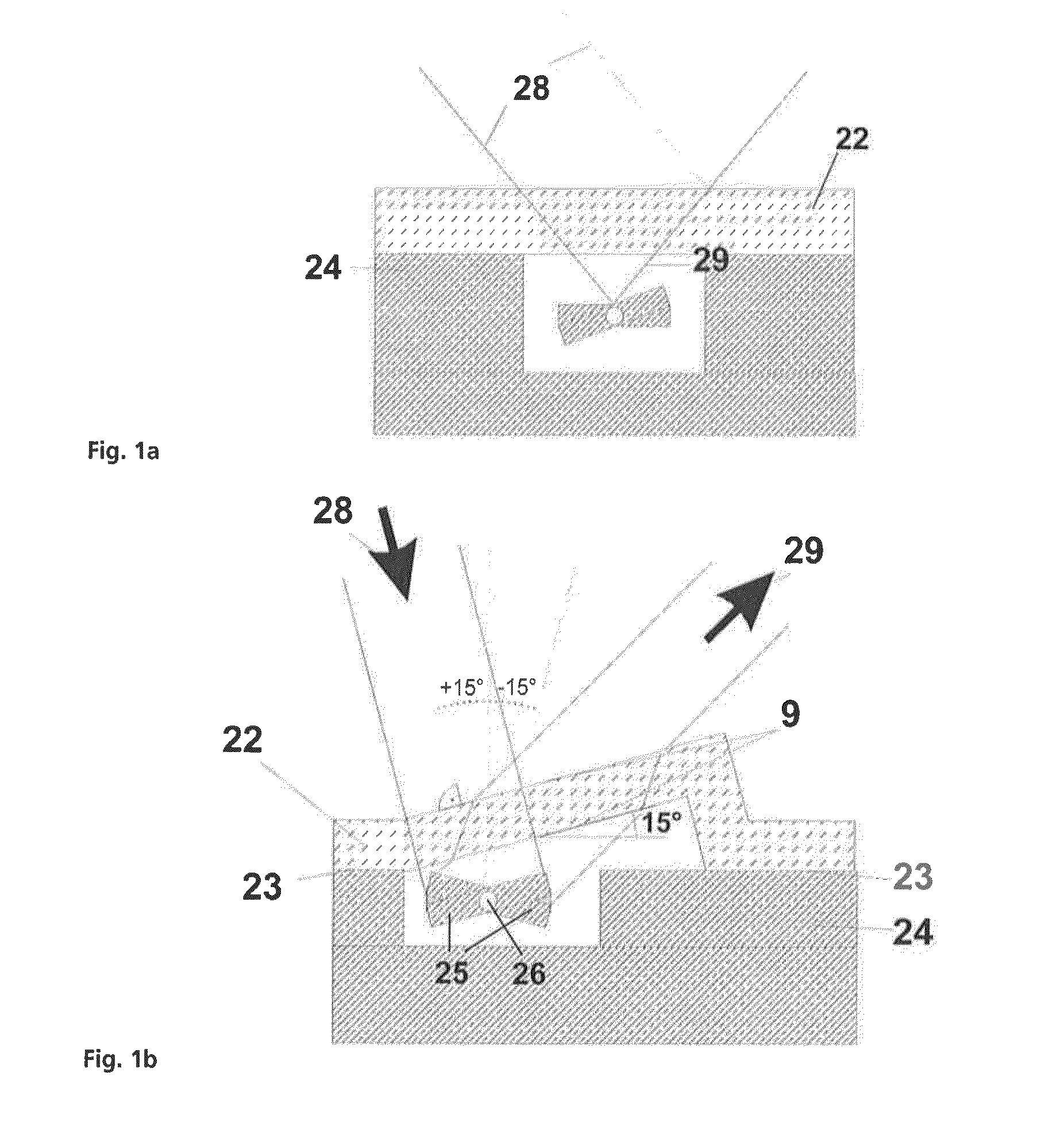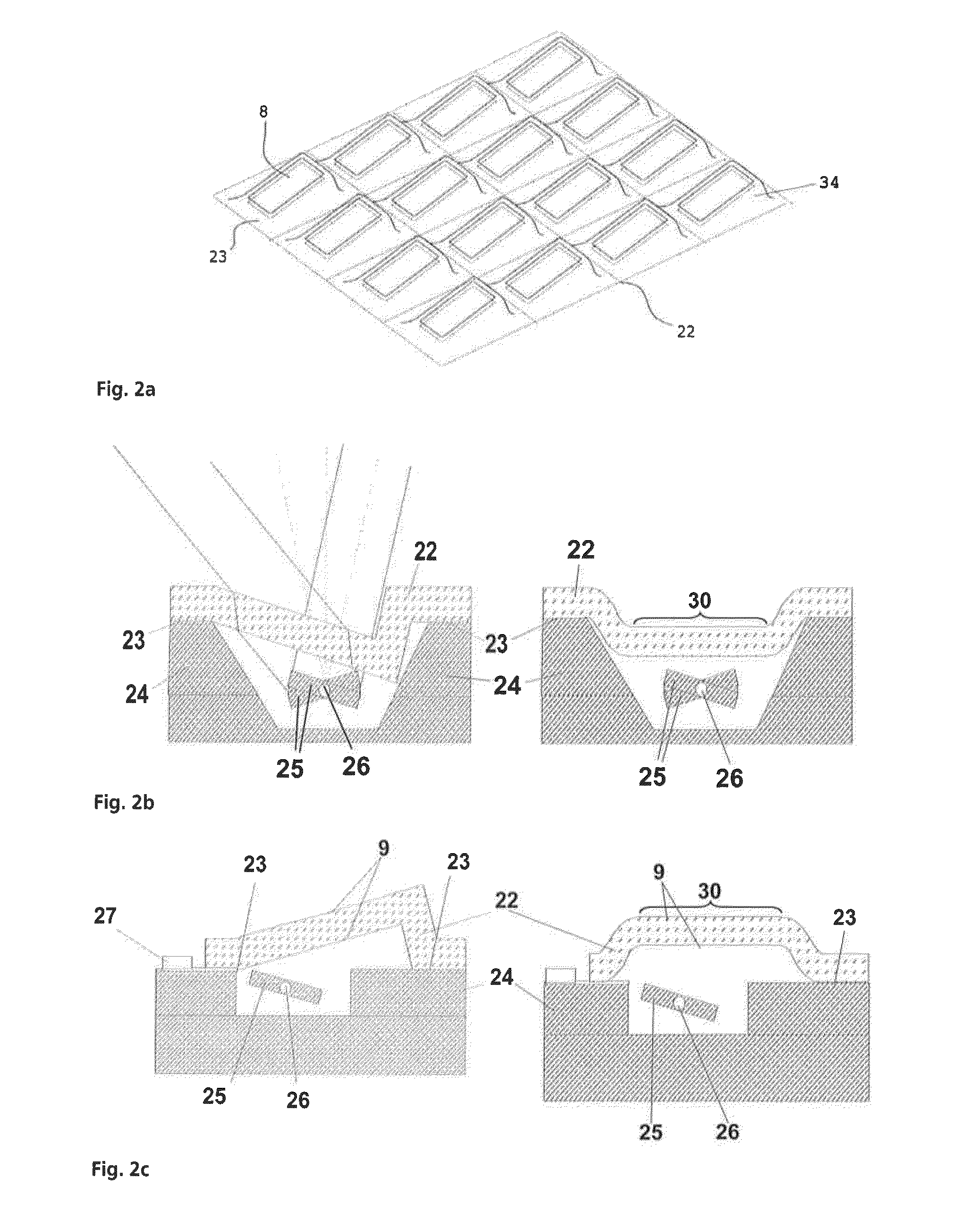Method for producing structured optical components
- Summary
- Abstract
- Description
- Claims
- Application Information
AI Technical Summary
Benefits of technology
Problems solved by technology
Method used
Image
Examples
Embodiment Construction
[0161]Without restriction of the generality, the invention will be described in greater detail hereafter on the basis of examples.
[0162]FIG. 2 shows a cover 22 produced using the method according to the invention having inclined optical windows 8 and displaced optical windows 30 and the use thereof to encapsulate a micromirror 25.
[0163]FIG. 3 shows the step sequence of a process variant to produce a cover 22 having inclined optical windows 8 according to the method according to the invention as claimed in claim 1.
[0164]FIG. 4 shows the step sequence of a process variant to produce a cover 22 having inclined optical windows 8 according to the method according to the invention as claimed in claim 1 with the use of support structures 13.
[0165]FIGS. 5-5.4 show the step sequence of further process variants to produce a cover 22 having displaced optical windows 30 according to the method according to the invention as claimed in claim 1 (FIGS. 5-5.1), claim 2 (FIGS. 5.2-5.3), and claim 3 o...
PUM
| Property | Measurement | Unit |
|---|---|---|
| Nanoscale particle size | aaaaa | aaaaa |
| Nanoscale particle size | aaaaa | aaaaa |
| Nanoscale particle size | aaaaa | aaaaa |
Abstract
Description
Claims
Application Information
 Login to View More
Login to View More - R&D
- Intellectual Property
- Life Sciences
- Materials
- Tech Scout
- Unparalleled Data Quality
- Higher Quality Content
- 60% Fewer Hallucinations
Browse by: Latest US Patents, China's latest patents, Technical Efficacy Thesaurus, Application Domain, Technology Topic, Popular Technical Reports.
© 2025 PatSnap. All rights reserved.Legal|Privacy policy|Modern Slavery Act Transparency Statement|Sitemap|About US| Contact US: help@patsnap.com



